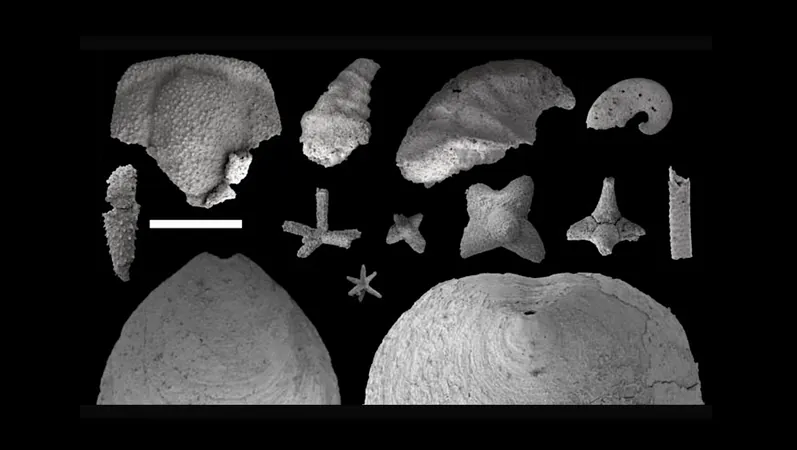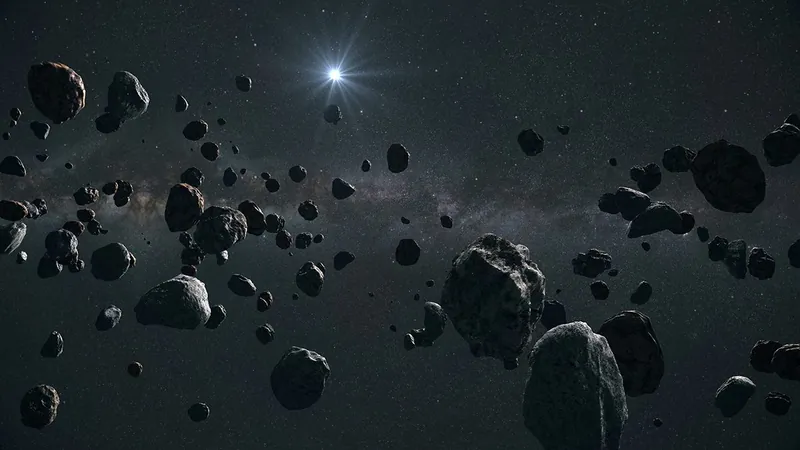
Unearthing Secrets of Ancient Ocean Life: The Surprising Role of Early Reefs
2025-06-16
Author: Sophie
A Journey Back in Time: The Dawn of Ocean Life
Over 514 million years ago, well before dinosaurs strode the Earth, sponge-like organisms called archaeocyathids were crafting some of the planet’s first reefs—notably in what is now northern Nevada, near Death Valley.
Groundbreaking Research Reveals New Insights
A recent groundbreaking study from the University of Missouri has delved into how these ancient reef builders shaped their environments. The researchers also examined tiny fossilized marine creatures known as "small shelly fauna," some of the earliest hard-shelled animals discovered.
Reef Diversity: Then vs. Now
While modern coral reefs are celebrated as biodiversity hotspots, this new research suggests that ancient reefs didn't promote biodiversity in the same way. Casey Bennett, the study’s lead author and a graduate student in geological sciences, noted that the early reefs displayed inconsistent patterns of biodiversity compared to today’s coral reefs.
"With today’s reefs, biodiversity typically decreases as you move away from the structure due to reduced access to shelter and food," Bennett explained. "However, our findings revealed that ancient reefs operated differently, and their effects on local biodiversity were highly variable, often influenced by specific environmental conditions."
Ancient Ocean Dynamics at Play
In their research, the team meticulously analyzed fossil assemblages from various rock formations. Their findings indicated a community characterized by low diversity but high abundance, with some organisms dominating specific layers, likely influenced by ancient ocean currents.
Co-author Sarah Jacquet, an assistant professor of paleontology, emphasized the role of hydrodynamics in shaping these ecosystems. She remarked, "It’s possible that ocean currents favored the persistence of certain species over others rather than the reefs acting as primary food sources for surrounding organisms."
The Implications for Modern Marine Systems
The type of sediment around these ancient reefs also played a critical role in fossil preservation, with varying rock types creating ‘sub-environments’ that retained distinct groups of fossils better than others, as Bennett highlighted.
The researchers stress the importance of continued field studies and fossil analyses to further unravel the complexities of early reef habitats and their impacts on life in Earth’s oceans.
Jacquet poignantly stated, "Understanding that the ancient world operated under different conditions encourages us to rethink how life evolved and adapted through time."
Published Findings: A New Chapter in Paleontology
The study, titled "Small shelly fauna biodiversity from reef-adjacent facies of the lower Cambrian Harkless Formation, Nevada," has made waves in the scientific community and was published in the journal *Palaeogeography, Palaeoclimatology, Palaeoecology*. Fellow Mizzou graduate Clare Mate also contributed significantly to this exciting research.









 Brasil (PT)
Brasil (PT)
 Canada (EN)
Canada (EN)
 Chile (ES)
Chile (ES)
 Česko (CS)
Česko (CS)
 대한민국 (KO)
대한민국 (KO)
 España (ES)
España (ES)
 France (FR)
France (FR)
 Hong Kong (EN)
Hong Kong (EN)
 Italia (IT)
Italia (IT)
 日本 (JA)
日本 (JA)
 Magyarország (HU)
Magyarország (HU)
 Norge (NO)
Norge (NO)
 Polska (PL)
Polska (PL)
 Schweiz (DE)
Schweiz (DE)
 Singapore (EN)
Singapore (EN)
 Sverige (SV)
Sverige (SV)
 Suomi (FI)
Suomi (FI)
 Türkiye (TR)
Türkiye (TR)
 الإمارات العربية المتحدة (AR)
الإمارات العربية المتحدة (AR)